 1483 - 1520
renaissance - high
1483 - 1520
renaissance - high
Description Raphael
Raphael, born Raffaello Sanzio da Urbino in 1483 in Urbino, Italy, emerged as one of the High Renaissance's luminaries, transcending the boundaries of his time to become a paragon of artistic excellence. His meteoric rise, marked by prodigious talent and an innate sense of harmony, unfolded against the rich tapestry of Italian art and culture.
Raphael's early years in Urbino exposed him to humanist ideals, and his artistic inclinations bloomed under the tutelage of his father, a painter. At a young age, he moved to Perugia, where his encounters with the works of Perugino and Pinturicchio influenced his early style. However, it was Raphael's sojourn to Florence that became a crucible for his artistic identity.
In Florence, Raphael absorbed the innovations of Leonardo da Vinci and Michelangelo, seamlessly blending their influences into a style uniquely his own. His "Madonnas," marked by grace and serenity, captured the hearts of Florentines and laid the groundwork for his ascent in the artistic hierarchy.
The transformative moment of Raphael's career came with his move to Rome in 1508. Commissioned by Pope Julius II, he embarked on decorating the Vatican Stanze, a monumental undertaking that would become a testament to his mastery. The "School of Athens," a fresco within the Stanza della Segnatura, showcased Raphael's ability to synthesize classical ideals with contemporary intellectual currents.
Raphael's art extended beyond religious subjects; his portraiture, notably "The Portrait of Baldassare Castiglione," revealed a profound understanding of character and individuality. His ability to infuse paintings with life, his mastery of perspective, and his virtuosity in composition elevated him to unparalleled heights.
Tragedy struck in 1520 when Raphael succumbed to a sudden illness at the age of 37. His untimely death left a void in the art world, but his legacy endured. Raphael's influence resonated through generations of artists, from the Mannerists to the Baroque masters.
His impact extended beyond the confines of the canvas; Raphael's workshop, known for its collaborative spirit, fostered a generation of artists who carried his legacy forward. The "Raphaelesque" style, characterized by harmony, balance, and idealized beauty, continued to shape artistic ideals well into the 16th century.
Raphael's life, though brief, encapsulated the spirit of the Renaissance. His art, a symphony of beauty and intellect, reflected an era where humanism, classical ideals, and artistic innovation converged. Raphael's legacy endures not just in the masterpieces that bear his name but in the enduring influence of his vision on the evolution of Western art.
Gallery
Paintings Raphael
Quotes
The best artist has no conception that a marble block does not itself contain within itself.
A good painter has two chief objects to paint—man and the intention of his soul. The former is easy, the latter hard, because he has to represent it by the attitudes and movements of the limbs.
I die in the faith of my Lord and Savior, the eternal God.
Happy is the man who sows by the brooks of knowledge.
Every painter paints himself.
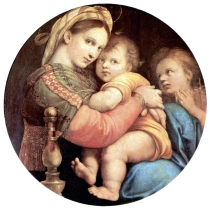

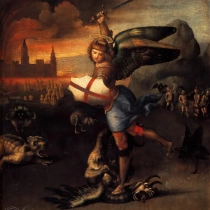
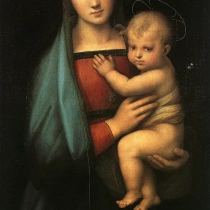

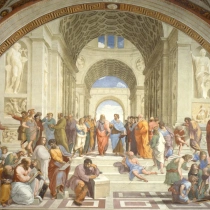
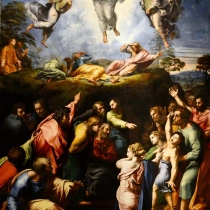

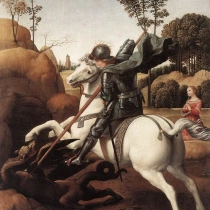


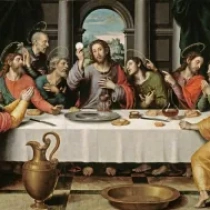
No Comments Yet...